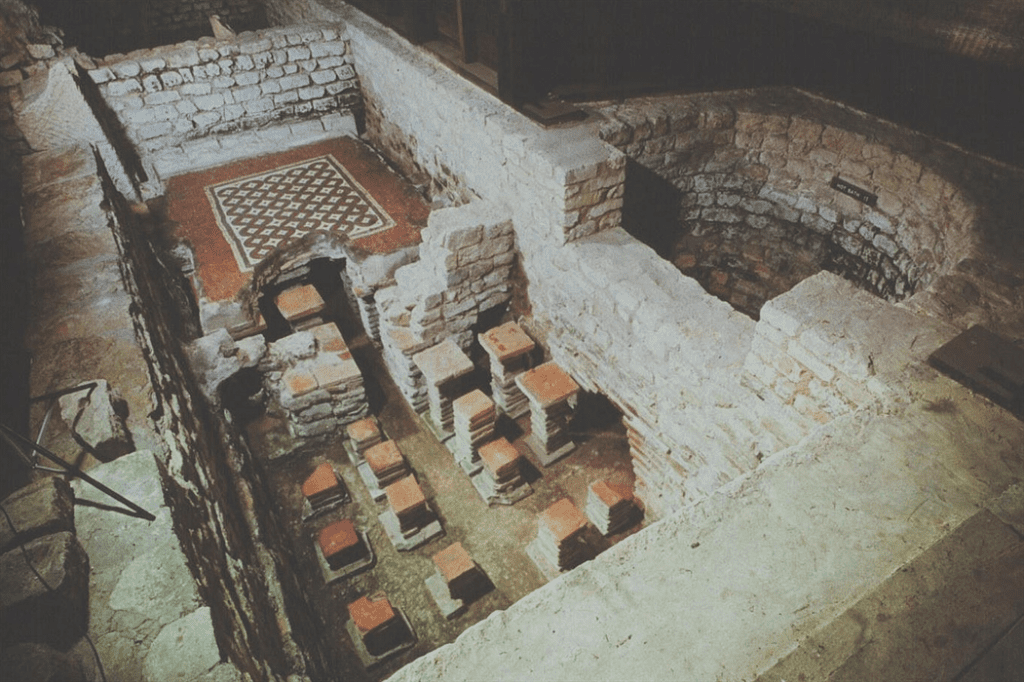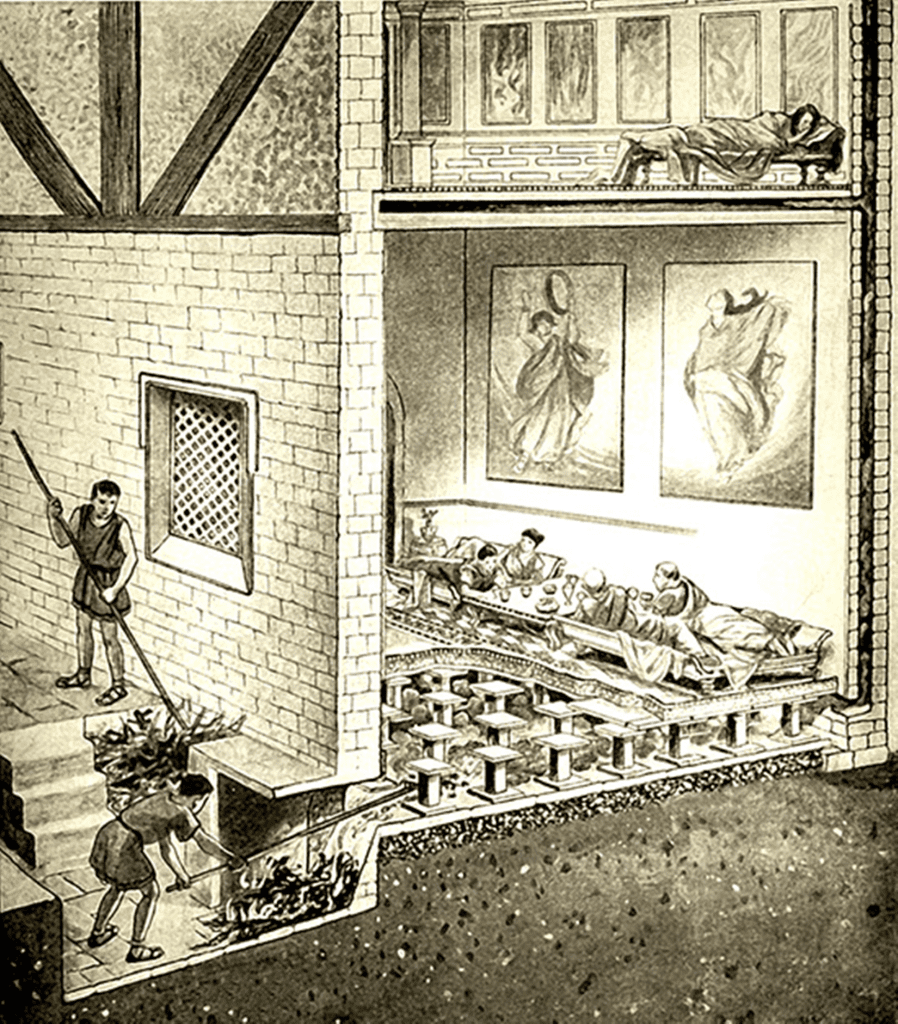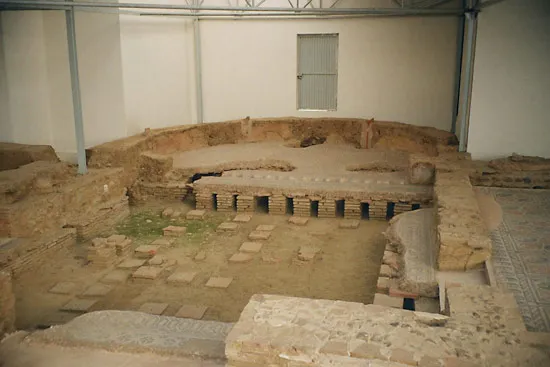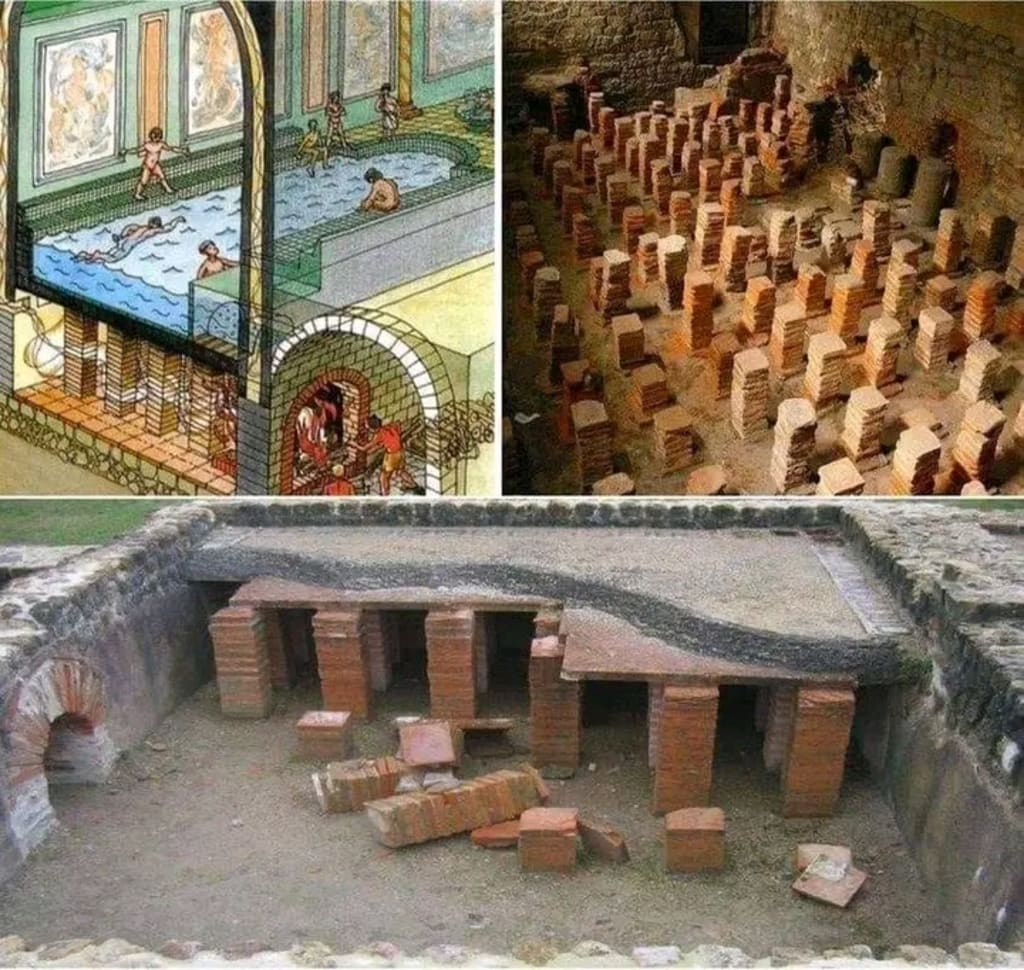When we think of central heating, we often imagine radiators, vents, or modern thermostats. But long before any of these conveniences existed, Roman engineers had already mastered the art of indoor climate control. Their invention, known as the hypocaust system, was an ancient marvel an early form of underfloor heating that provided comfort to wealthy Roman homes and grand public bathhouses.
Developed over 2,000 years ago, the hypocaust wasn’t just a clever engineering trick it was a symbol of luxury, status, and Roman ingenuity. From polished marble floors to steam-filled rooms, this heating method reflected the Romans’ desire for both elegance and efficiency.

How the Hypocaust Worked
At its core, the hypocaust system functioned by circulating hot air underneath the floors of a building. Roman engineers began by raising the floor on a series of small pillars called pilae. These created a hollow space beneath the living area. A furnace, or praefurnium, was located outside the main structure and used to burn wood or other fuel. The hot air and smoke generated from this furnace would travel through the underfloor cavity, warming the space above.

In some cases, hollow tiles called tubuli were installed in the walls, allowing the hot air to rise and heat the entire room. These tiles guided warm air upward, distributing heat more evenly and creating a full-body warming experience, especially in Roman bathhouses.
The floor itself was typically made from durable materials like concrete and covered with decorative marble or mosaic tiles. As the hot air circulated below, it gently warmed the surface providing an early version of radiant heating.
Video:
Hypocaust Diorama – Roman Heating System
Where Hypocausts Were Used
The hypocaust system was most famously used in Roman bathhouses, or thermae, which were central to Roman social life. These complexes included a variety of rooms warm, hot, and cold and each was carefully temperature-regulated thanks to hypocaust technology.
But hypocausts weren’t limited to public spaces. Wealthy Romans also installed them in their private villas and estates. To have a hypocaust in one’s home was a clear sign of affluence and modern taste. It represented the height of Roman architectural and cultural sophistication.
However, this kind of luxury came with significant requirements.

The Cost of Comfort
As advanced as the hypocaust system was, it demanded constant labor and resources. The furnaces required large amounts of wood, making it a fuel-hungry method of heating. Slaves or workers had to keep the fires burning consistently, monitor airflow, and clean out ash and soot regularly. If the furnace went cold, the entire system became ineffective.
Maintenance was no small task either. The pillars supporting the floors had to remain stable, and any cracks in the flues or walls could lead to dangerous smoke leaks. Despite these challenges, the Romans considered the tradeoff worthwhile, especially in the colder months or in the northern reaches of the empire where winter could be harsh.
Video:
The thermal baths were a feat of thermal engineering:• Hypocaust heating system (like Roman baths).
A Legacy of Engineering Excellence
The hypocaust system is often seen today as one of the most striking examples of Roman innovation. It showed how the empire combined functionality with luxury, using architecture not just for shelter but for lifestyle enhancement.
Even after the fall of the Western Roman Empire, the idea of radiant heating did not completely disappear. Similar techniques were later found in Islamic and Byzantine architecture, and variations even appeared in ancient Korea with their ondol system.
Modern radiant floor heating systems, which circulate warm water or electric currents under floors, bear more than a passing resemblance to the Roman hypocaust. Though the materials and technology have changed, the core idea remains remarkably similar comfortable, even heat from the ground up.

Conclusion: Ancient Comfort, Timeless Innovation
The Roman hypocaust wasn’t just a feat of engineering it was a reflection of how ancient societies balanced comfort, technology, and aesthetics. While it was a luxury reserved for the elite, it paved the way for future innovations in indoor climate control.
Today, as we search for sustainable and efficient heating methods, looking back to the ingenuity of Roman engineers reminds us that great ideas often begin with simple principles. Sometimes, the path to the future runs beneath our feet just like it did in ancient Rome.


